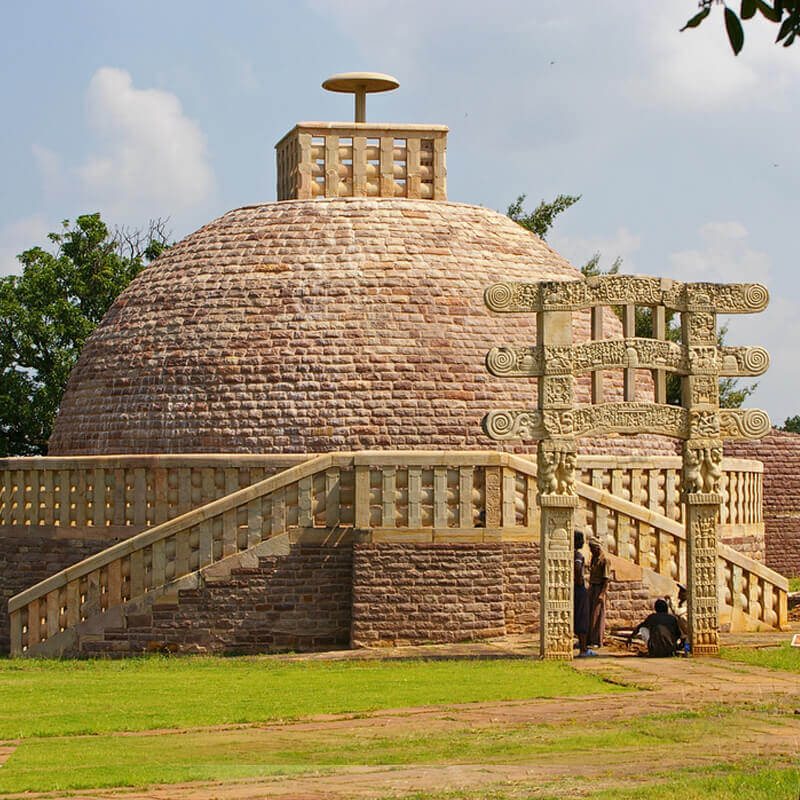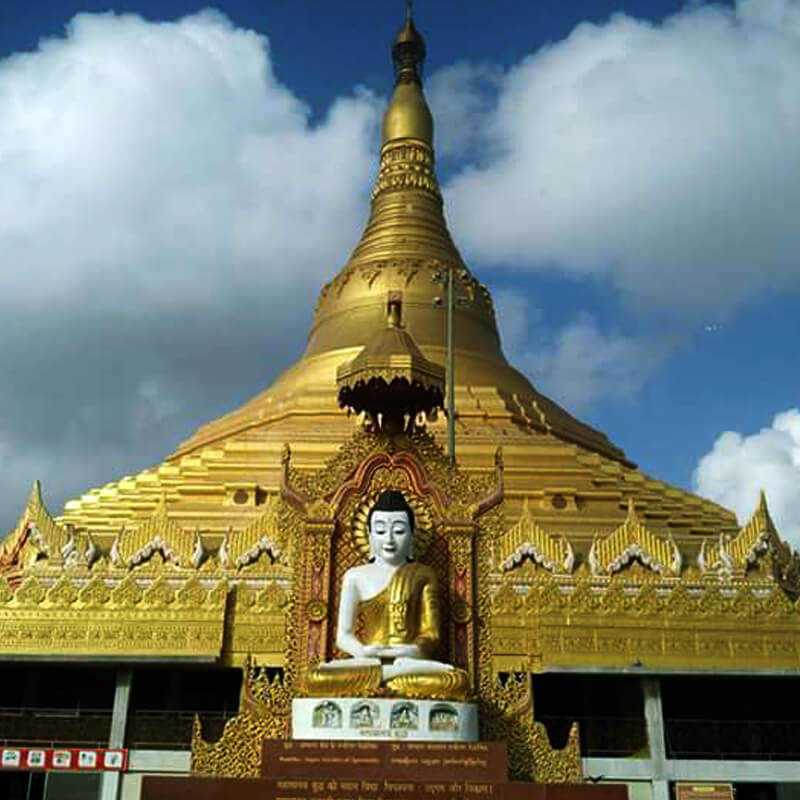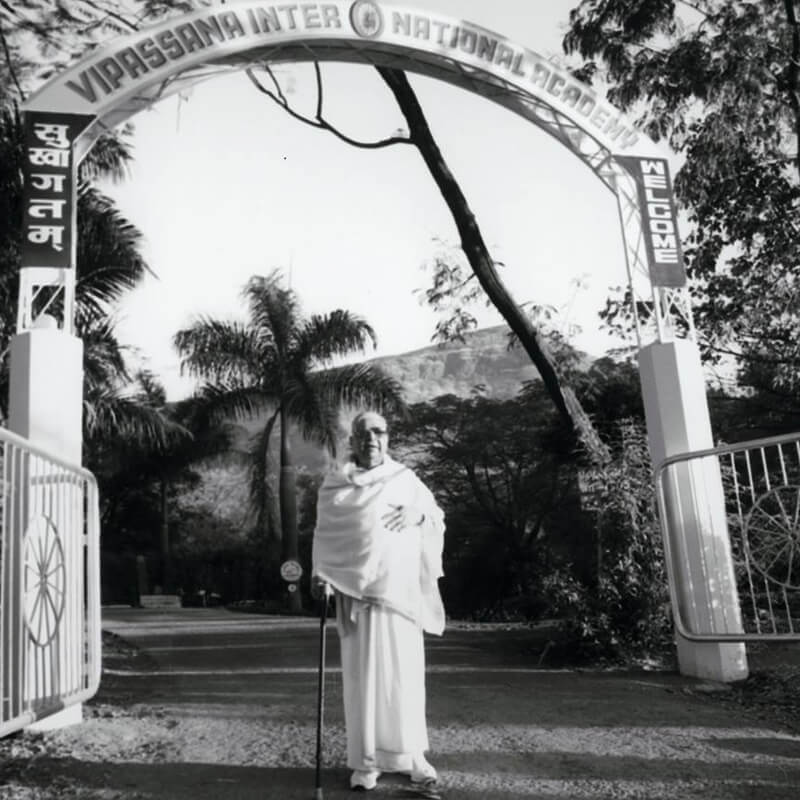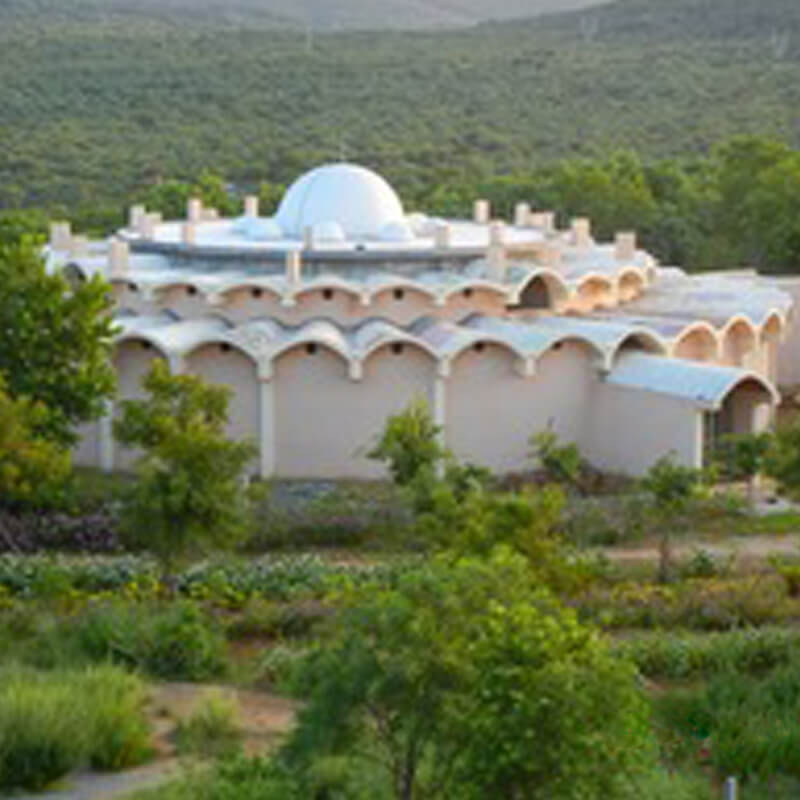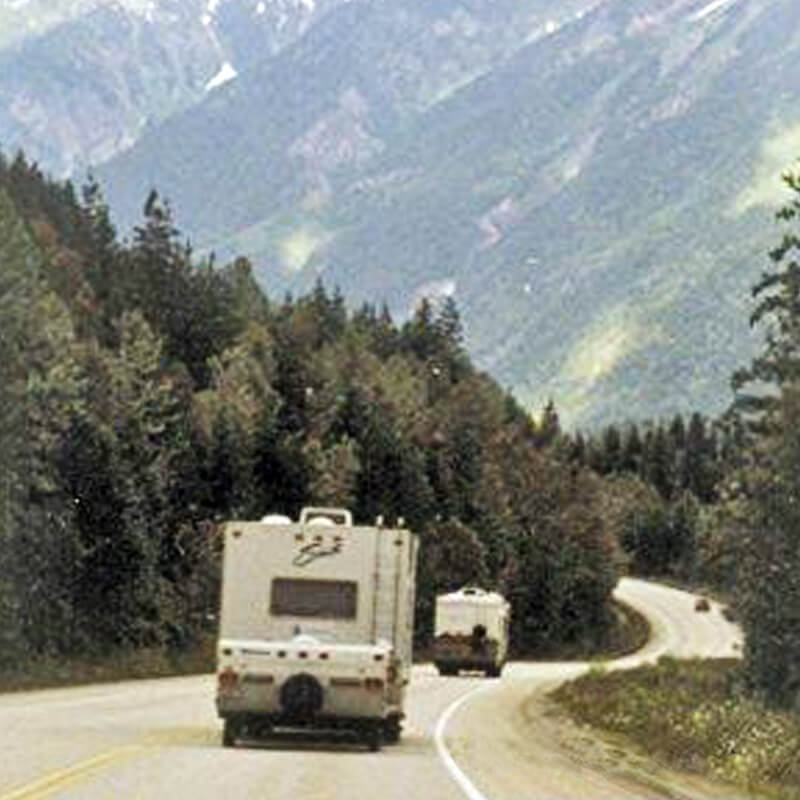The journey to this auspicious day started in 1994, when the first 10-day Vipassana course took place in Argentina. It wasn’t long before a strong group of meditators formed and grew, until finally there was a schedule of at least six courses a year.
As numbers rose and the demand for courses increased, old students set the objective of establishing a permanent site for the practice of Vipassana. In 2005 the Vipassana Argentina Association was founded. It soon acquired 22 hectares (54 acres) of land situated 75 kilometers (45 miles) from Buenos Aires, on the outskirts of the town of Brandsen. The property was in a peaceful environment and it was easily accessible by car and public transportation. Two old students sat the first self-course on the land, sleeping in tents and using a shipping container for shelter from the weather.
In 2008, the Association sold 11 hectares of land, and with the proceeds it was able to begin construction. The first building was a kitchen with two bathrooms. Initially it was used not just for cooking and eating but also for meditation, meetings and sleeping accommodation. This base allowed the Association to organize work periods, one-day courses and meetings at the center.
In May 2009, further construction started on the property. With meditators overseeing the work, contractors cleared land for roads and a parking area, put in place foundations for the meditation hall and a dormitory, and built the shell of two bathroom blocks. Still minus the fixtures, the blocks became temporary accommodation.
After that there was a pause until late 2011, when generous donations enabled the work to continue. The word quickly circulated that meditators were welcome to help. The first to arrive, long before anyone else, were three young Brazilians. They slept on the floor, ate rice and beans, took cold showers, and started cutting the grass and cleaning the site. Most important, they meditated. Soon others joined them for the push to make Dhamma Sukhada a functioning center.
The contractors completed the meditation hall and dormitory, and built dining rooms and a teachers’ residence. Volunteers pitched in to help with building and also to plant trees, paint, dig and of course meditate.
These efforts created very basic facilities, with rough cement floors, temporary plastic sheeting on the roofs and unfinished brick walls that sometimes leak. But what matters is that the center is now capable of hosting 10-day courses. It can accommodate 70 students, and the plan is to eventually expand the capacity to 120.
While all this has taken place, the Wheel of Dhamma has kept turning in Argentina. There have now been nearly 90 ten-day courses, a prison course, three-day and Satipatthana courses for old students, and a children’s course. As a result of this activity, the center can draw on a body of old students eager to serve. At the same time, the Association and its committees have access to a wealth of experience for the task of setting up the center’s administrative systems.
Now that courses have begun at the center, the focus is on improving the existing buildings. For example, work has started to tile the roofs of the meditation hall and dormitory in preparation for the winter rains. Other projects on the to-do list include properly finishing the inner and outer walls and floors.
Still another priority is landscaping. Over 150 trees have been planted. Right now they need care but eventually they will provide shade from the summer sun. Hedges will help to separate the men’s and women’s areas.
Dhamma Sukhada will host almost continuous 10-day and other courses during the warm season, from October through May. The winter, however, is cold and wet. Heavy rains sometimes make the dirt road from the nearest highway impassable. Long-term plans call for improving the road, insulating the buildings and installing heating systems. Until that is done, the center will hold only one-day courses in the winter months.
The center stands on the pampas, an enormous grassy plain dotted with seasonal wetlands and broken up by lines of trees planted as windbreaks by the early settlers. Surrounding the property are hayfields and cattle ranges. Visitors are struck by the immense, ever-changing skies, and the magnificent sunrises and sunsets. Wild parrots nest in a large stand of eucalyptus trees; their daytime squawking gives way to the sounds of frogs and crickets at night. Occasionally, the cows in the neighboring dairy farm begin lowing all at once. The vast skies, the windswept plain reaching to the horizon, the sense of open space, the sounds of nature amid the silence—all remind visitors that there is another world apart from the bustle of daily life. And they can explore that world at Dhamma Sukhada.
Voices of Dhamma Sukhada
Meditators:
I feel great joy at seeing the steady growth, step by step. But what touches and excites me even more is how—in parallel with the construction of Dhamma Sukhada—the sangha here has taken form, and how with love it has continued moving forward. There were pitfalls along the way, yes, but we did not stray from the direction of the teachings: “For the benefit of many!”
* * *
What seems to be service to others is a unique opportunity to grow, learn and mature. That brings forth a feeling of gratitude.
* * *
I had heard it said that when the disciple is ready, the teacher arrives. At the time, I had believed that it was just a philosophical saying. Then I took my first course in 1999. The consistency between theory and practice, between words and deeds, and the possibility of experiencing for oneself without resorting to blind faith—all are part of the purity of this gem. It is a teaching that, as soon as you try it, you just want to share it with others. The inauguration of Dhamma Sukhada is the fruit of gratitude and the desire for all beings to benefit from this universal technique.
* * *
With the help of many students unknown to us, with whom we shared this wonderful technique, what is now Dhamma Sukhada has arisen. Always with the great volition of all who helped in the project, we continue to join forces so that more and more people may benefit.
From an Assistant Teacher:
During construction, we were sleeping in a building without doors or windows, and with no bathroom. We covered the openings with plywood when the fierce storms blew in, and kept on working.
More than once we ran out of money and materials, and literally had to start again. But we never ran out of Dhamma. As more and more students participated, it became clear the group would be successful and the center would open.
In the days leading up to the first course, work reached a fever pitch and so much got done that it was truly amazing. Dhamma works, but only when backed up by patience and persistence.
The Argentinian old-students are rightfully proud of their center and there is no lack of support from the base of old students. This is how it should be and what Goenkaji wanted.
The road ahead will be difficult but the Dhamma is firmly established in Argentina at Dhamma Sukhada.
From Goenkaji:
Those of you who established the center now are pioneers and have a great responsibility. If you maintain the purity of the teaching and the purity of the vibration, coming generations will imitate you and also do the same. And so from day to day, year to year, generation to generation, the vibration will become stronger and stronger.
May your center shine its beacon to every land of the world. May it become a true dwelling of Dhamma, in the shelter of which many find the way out of suffering.
(Courtesy: International Vipassana Newsletter, June 2013 issue)

